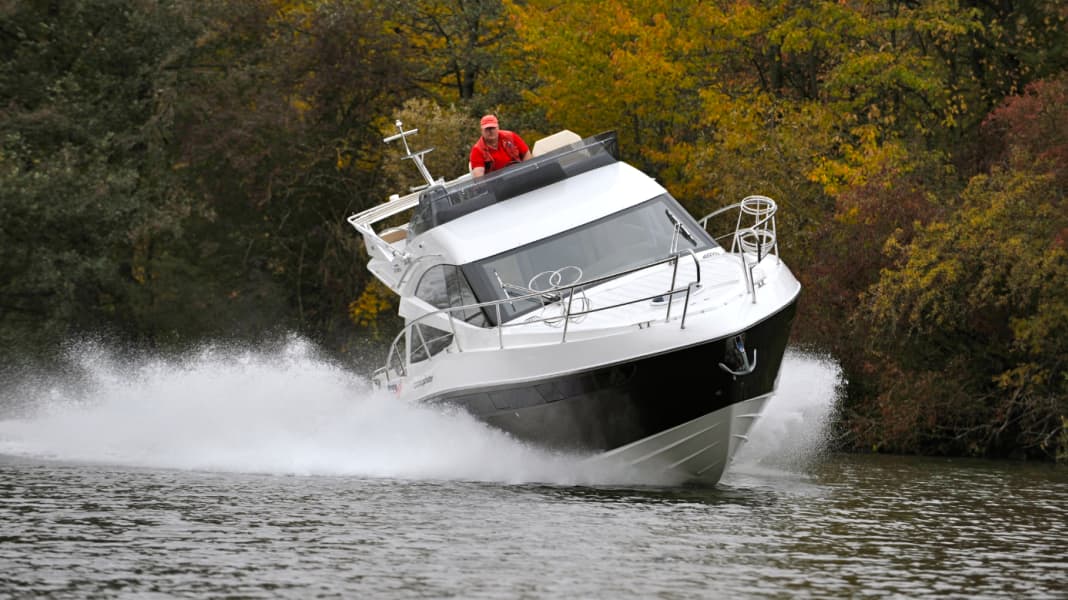






For 30 years now, the name Galeon has been synonymous with quality boats. The 340 Fly is available with one or two diesel engines with Z-drives from Volvo Penta or Cummins-Mer-Cruiser. The shipyard installs Cummins-VW diesel engines for cruises on Lake Constance.
As far as the overall finish is concerned, the boat impresses on the outside with a high-gloss gelcoat that can be painted on the hull sides at the customer's request, as on the test boat. All plastic cut edges are rounded and partially sealed, while a continuous coat of paint protects the laminate on the inside. The woodwork is clean and precise, and the ceiling and wall coverings are accurately executed. The technical and electrical installations are just as good.
A double system plus bow thruster (extra) means precise manoeuvring in a confined space in the harbour. Docking and mooring are no problem. In order to keep the waves low at slow speeds, we do not allow either engine to run at more than 1000 rpm and sail just below the hull speed of 6 knots. Despite the engines running in synchronisation, the directional stability requires a course correction from time to time.
From 2000 rpm or 11 knots, the test boat begins to planing, the bow lowers at 2400 rpm, which means planing is reached. With the Z-drives fully trimmed, the foresight is always maintained during the transition; in the +2 drive trim position, it is briefly interrupted. At full throttle, both engines turn exactly what the manufacturer allows, and we measured the top speed at just under 37 knots.
After analysing our measured values, we determine a theo-retic radius of action at slow speed of
639 nm plus 15 % reserve. The most economical cruising speed is 28 knots when both engines are running at 3000 rpm. One tank of fuel is then sufficient for a non-stop cruise of around 233 nm and around 194 nm at full throttle, plus reserves. That fits. Sound pressure: At full throttle, we measured a maximum of 79 dB/A in the closed saloon, 89 dB/A in the cockpit and 86 dB/A at economical cruising speed, which is still sufficient. Waves from commercial shipping are mastered without any problems.
It takes some getting used to, at least on the flybridge, when cornering, where you have to look for a foothold and, depending on the speed and the radius of the bend, expect the boat to heel more or less. At the narrowest point, the curve diameter is around three boat lengths. During the 180° turns made at cruising speed, the foredeck dips slightly at the front with the drives fully trimmed, the speed slows down noticeably and the boat rushes through the turn with a good heel and a turn diameter of almost three boat lengths. If the trim is maintained in the sailing position, the same manoeuvre is accompanied by two to three rocking movements, but the hull never catches.
YOU CAN FIND THE WHOLE BOOT TEST IN THE CURRENT SEPTEMBER ISSUE OF BOOTEWHICH WILL BE AVAILABLE IN STORES FROM 22 AUGUST.

